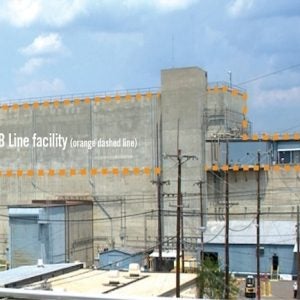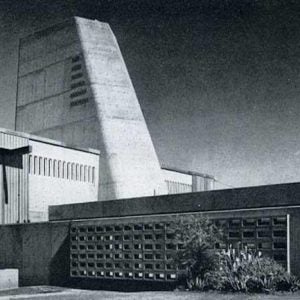Nick Higginson explains how an integrated waste management approach could help make decommissioning the UK’s nuclear submarines safer, faster and cheaper.
THE FIGHTING TEMERAIRE, JMW TURNER’S elegiac portrait of a Trafalgar heroine on her way to be broken up, is regularly voted Britain’s greatest painting. As a former Royal Navy officer, I am always sad to see the demise of naval vessels. Like nuclear power reactors, they are nurtured and maintained during their operational years by a highly motivated workforce who find it very hard to contemplate their dismantling and demolition.
However, the challenge of cleaning up the UK’s civil and military nuclear legacy means that we have a responsibility to society to ensure safe disposal in both a timely and affordable way.
None of the UK’s 20 retired submarines has yet been disposed of, as a National Audit Office report, Investigation into Submarine Defuelling and Dismantling, pointed out. The report, published in April 2019, estimates that maintaining those units since 1980 has cost the Ministry of Defence about £500m, and in its most recently published accounts the department estimates that they represent a total liability of £7.5bn.
A defuelling facility project has been delayed by 11 years, during which time costs have increased by £100m (57%). The dismantling project has been delayed by 15 years, while whole-life costs have increased by 50% to £800m. The report clearly illustrates how, in its own words, “delays create cost, capacity and reputational risks beyond the project”.
Such challenges are not unique to the defence sector. The civil nuclear industry is still grappling with how to safely dismantle facilities that were not designed with decommissioning in mind.
But there is a ray of hope. Just as Turner’s painting made a technological point — the advent of steam has rendered sail-powered warships obsolete — new technologies and ways of working are enabling us to solve complex decommissioning problems more safely and cost-effectively.
To avoid delays and cost overruns and work more safely, faster and more cheaply, decommissioning contractors are applying an integrated waste management approach. This means considering the volume, radioactivity and physical form of the secondary as well as primary wastes. The contractor can optimise the overall outcome by choosing to generate secondary wastes that are easy to handle and dispose of, at the cost of requiring a more sophisticated retrieval device. For example, laser-cutting items underwater may be more expensive than sawing them in air, but underwater cutting does not require bulky air filters that would become secondary wastes. Such an approach can accelerate the work as well as saving tens of millions of pounds in through-life costs.
Disposal costs are also important. If an efficient short-term packaging solution requires special handling facilities or extra vault space at a geological disposal facility it may increase total lifetime costs.
Wood is carrying out a construction, design and management project to retrieve, process and dispose of radioactive waste from a UK nuclear power station that is being decommissioned. The company has designed various retrieval and conditioning systems that have removed nearly 50m3 of borderline wet waste. Characterisation showed that the conditioned waste packages were ready for disposal as low-level waste, saving considerably on the cost of storage.
Waste strategy
Waste management has to be an integral part of the decision making, planning and execution processes for decommissioning projects. Effective application of the waste management hierarchy — managing waste materials based on their environmental impacts — forces us to seek options to divert waste from disposal where possible.
Wood is providing strategic advice concerning radioactive waste arising from the Fukushima Daiichi decommissioning programme. A novel integrated waste management approach is used to identify the optimal disposal routes, from intermediate-level waste to very low-level waste.
Data quality is a key aspect of this work. A more detailed inventory of the waste, allows different wastes to be treated appropriately, reducing lifecycle costs for radioactive and controlled waste management and for decommissioning as a whole. It also gives stakeholders confidence that decisions about waste management are based on realistic data. Data management is required at every stage of the decommissioning process. We use GIS to visualise, analyse and manage the data, which can be shared and visualised through maps and apps.
It applies equally in the UK, where Wood has been supporting Sellafield since 2013 in developing an intranet-based GIS platform with bespoke mapping tools to provide access to key business datasets and allow informed decisions on spatial data to be made in an effective and time-efficient way.
To gather appropriate and accurate data, advanced characterisation techniques must be applied, often in complex environments. To improve safety and reduce the time taken to monitor radiation in storage ponds at Sellafield, we used specially adapted remotely operated vehicles and underwater in-situ gamma spectroscopy to detect radioactive sources. A submersible ROV collects samples of water before docking at a custom-built monitoring station floating at the side of the pond, where the sample is analysed by a gamma radiation spectrometer. We also deploy high-resolution gamma spectroscopy and specialist radiometric measurement technology.
New solutions for legacy waste
The old ways of decommissioning are being questioned. For example, encapsulation in cement is the traditional way of dealing with intermediate and higher activity waste, but other techniques which can reduce overall waste volumes — and therefore cost — are starting to find favour.
Wood developed a geopolymer technology (SIAL), using modular equipment for on-site project-specific or hub operations. It has been used to immobilise wastes at several nuclear facilities including ion exchange resins and sludges at Dukovany in the Czech Republic and 700t of sludge and resins at Bohunice in Slovakia. More efficient waste loading reduced costs.
Waste volume reduction is key to controlling decommissioning costs. This was particularly evident when Wood carried out remediation work at the UK’s Eskmeals Ministry of Defence site in Cumbria, a former weapons testing firing range. We used high force compaction, gas cutting to reduce large metal plates into more manageable pieces for shot blasting, and we smelted uncompactable waste such as steel framework, to reduce the amount of irregularly shaped items and maximise packaging efficiencies in waste containers.
Decontamination processes can also help to reduce waste volumes. Some examples are:
- Surface decontamination by manual wiping and intrusive shot blasting;
- Chemical decontamination e.g. electrochemical baths and handheld pads to decontaminate vessels and circuits;
- Scabbling to remove top layers of contaminated surfaces; ● Strippable coatings to tie down contamination onto surfaces.
Cross-sector collaboration
In the UK, the Nuclear Decommissioning Authority (NDA) and the Oil & Gas Authority are keen that the two sectors should share ideas for technical innovation, which is seen by both as a step changer in cost and schedule reduction.
As part of a project funded by the NDA and Innovate UK, Wood and several partner organisations are developing a new system for decommissioning highly radioactive cells on the Sellafield nuclear site. It will cut costs in several ways: enabling planning and waste characterisation to take place on location and in real time; doing less work at height; and reducing workers’ exposure to radiation.
The new system draws on technologies from non-nuclear sectors, including:
- Novel material-handling solutions, designed to reduce the risks associated with working at height;
- A navigation system (designed for missions to Mars) which will operate autonomously to map areas where human access is impossible;
- ‘Mixed reality’ headsets which extend virtual reality to allow a virtual object to appear in the physical world in an intuitive way;
- A multi-fingered gripper that can understand what it sees and touches, enabling robots to grasp a wide range of different-shaped objects.
Innovation is critical to successfully completing the UK’s decommissioning mission. It is also creating new technologies and skills that can underpin exports and wealth creation for the private sector and reduce the cost to the taxpayer of civil and military decommissioning.
Author information: Nick Higginson is Key account director for waste management and decommissioning at Wood






